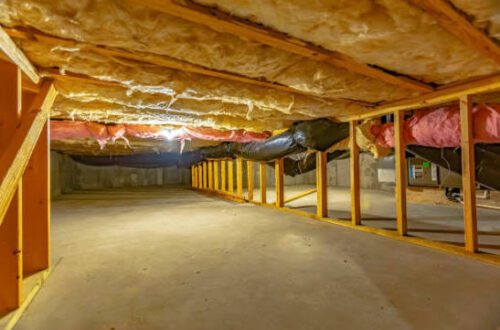Key Takeaways:
- Understand fundamental principles of landscape design.
- Learn practical tips for enhancing outdoor spaces.
- Explore valuable external resources for advanced design ideas.
Table of Contents:
- Principles of Landscape Design
- Planning Your Design
- Selecting the Right Plants
- Integrating Hardscapes
- Sustainable Landscaping Practices
- Maintaining Your Landscape
- Additional Resources
Principles of Landscape Design
Effective landscape design hinges on several fundamental principles: balance, contrast, and unity. These elements help create visually pleasing and functional outdoor spaces. Balance can be symmetrical or asymmetrical, depending on the homeowner’s style and preference. Contrast introduces interest and variety by pairing bright flowers with neutral stones. Unity ties all components together, ensuring that plants, structures, and decorations complement one another. Color, texture, and scale bring harmony and decrease visual clutter. For example, balancing soft, leafy plants with structured, wooden elements can create a captivating contrast that catches the eye.
Planning Your Design
The success of your landscape project largely depends on your initial planning. Consider the layout, climate, and intended use. Visualizing the space with a simple sketch can make it easier to see where each element will fit. Incorporating landscape design principles into your planning can help create a cohesive and inviting outdoor area. This step ensures that every plant and structure has a place and purpose. Consider factors such as sun exposure, natural wind patterns, and existing vegetation. These elements will influence your plant choices and the arrangement of your garden features.
Questions to Ask Yourself:
- What is the primary function of this outdoor space? Relaxation, entertainment, gardening?
- How much maintenance are you willing to commit to? Consider time and budget.
- What are the climate and soil conditions? Knowing these will help you select the right plants and materials.
- How do you want to interact with the space? Will there be pathways, seating areas, or playgrounds?
Selecting the Right Plants
Choosing appropriate plants is crucial for a thriving landscape. Indigenous plants typically need less upkeep and thrive in regional weather conditions. Researching local flora can save you time and money in the long run. Resources offer a comprehensive plant dictionary to assist in selection. When choosing, consider factors like sun exposure, soil type, and water needs. It’s beneficial to incorporate a mix of perennials, annuals, and shrubs for a year-round aesthetic. Additionally, consider the height and spread of plants to avoid overcrowding and ensure each plant thrives.
Popular Plant Choices:
- Perennials: Provide long-lasting beauty with minimal maintenance. Examples include lavender, hostas, and peonies.
- Annuals: Add seasonal color, but replanting is required each year. Marigolds, petunias, and zinnias are popular choices.
- Shrubs: Offer structure and year-round interest. Consider boxwoods, hydrangeas, and azaleas for different tactile and visual effects.
Integrating Hardscapes
Hardscapes such as patios, walkways, and water features add structure and function to your landscape. These components can act as central points and improve the area’s functionality. It’s essential to keep a balance between hard and soft elements. Too much of either can overwhelm the sensory experience. Natural materials like stone and wood can seamlessly blend the hardscape with the surrounding greenery. Paths made of gravel or stone pavers can direct foot traffic and connect different areas of your garden, while a wooden pergola or arbor can provide shade and vertical interest.
Popular Hardscape Features:
- Patios: Create outdoor living spaces perfect for dining and relaxing.
- Walkways: Guide visitors through the garden and prevent lawn damage.
- Water Features: Add tranquility with ponds, fountains, or waterfalls.
- Retaining Walls: Manage slopes and create terraced garden beds.
Sustainable Landscaping Practices
Eco-friendly landscaping techniques benefit the environment and can save you time and money. Practices like xeriscaping, which focuses on drought-resistant plants, and composting are excellent starting points. The concept of sustainability in landscape design is gaining traction, with more homeowners leaning towards environmentally conscious choices. The EPA provides valuable resources on sustainable landscaping. Techniques such as rainwater harvesting, using organic mulches, and avoiding chemical pesticides contribute to a healthier environment and garden.
Tips for Sustainable Landscaping:
- Use native plants to reduce water and maintenance needs. These plants are well adapted to the local climate and pests.
- Incorporate rain gardens to manage stormwater runoff. A rain garden planted with deep-rooted native plants can capture and filter rainwater, reducing the burden on storm drains.
- Mulch generously to reduce weed growth and conserve moisture. Organic mulches break down naturally, enhancing the soil’s structure.
- Employ drip irrigation systems to minimize water waste. Drip irrigation systems deliver water straight to plant roots, decreasing evaporation and runoff.
Maintaining Your Landscape
Routine upkeep is crucial for a landscape to remain beautiful and enduring. Tasks like watering, pruning, and seasonal plant care are essential. Developing a regular maintenance plan can assist in anticipating potential problems. Simple actions like mulching, weeding, and monitoring the health of your plants can make a significant difference. Regular inspection of hardscape elements ensures they remain safe and functional. Seasonal tasks, such as leaf removal in the fall or planting annuals in the spring, keep your landscape vibrant.
Maintenance Tips:
- Watering: Deep, infrequent watering encourages root growth.
- Pruning: Regularly trim shrubs and trees to maintain shape and health.
- Fertilizing: Use organic fertilizers to promote healthy plant growth.
- Pest Control: Implement integrated pest management to keep garden pests in check without harming beneficial insects.
Additional Resources
Exploring resources such as gardening books, online tutorials, and local gardening clubs can be extraordinarily helpful for more in-depth guidance and diverse ideas. These platforms offer expert advice and community support, making your journey through landscape design smoother and more enjoyable. Joining a gardening club can provide community and shared knowledge, while online tutorials offer step-by-step guides and inspiration. Books by renowned horticulturists can also offer valuable insights and detailed techniques.






